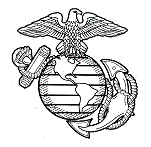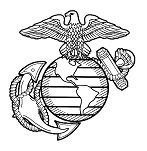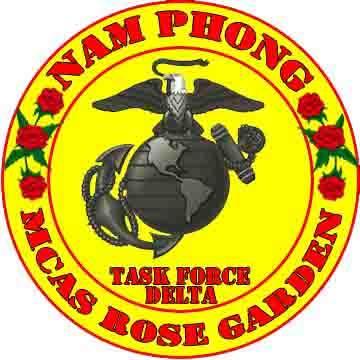In response, on 5 April, 1972, the
1st Marine Air Wing, Fleet Marine Force Pacific, principally
located at MCAS Iwakuni Japan and MCAS Futema, Okinawa, was
directed by Navy Command Seventh Fleet to deploy two tactical
aircraft squadrons to the Republic of Vietnam. Marine Air
Group-15 was immediately ordered to mobilize their two F-4
Phantom squadrons [VMFA-115 and VMFA-232], along with supporting units, to
Da Nang Air Force Base, South Vietnam, from MCAS Iwakuni to help counter
the invasion forces. They were joined by MAG-12’s F-4 Phantom squadron
[VMFA-212] from Kaneohe Bay, Hawaii 9 days later.
While the Marines were conducting air operations from Da
Nang, President Nixon’s administration was trying to reconcile its overall
“Vietnamization” plan that, as part of the peace negotiation efforts
and American force withdrawal, had removed the Marines from the
Vietnam combat theater a year earlier. The administration decided the
Marines were again necessary, but couldn’t stay in
Vietnam.
However, where else to deploy was a problem. Political
constraints with Tokyo prevented SEA combat operations direct from Japan,
and the Navy and Air Force bases in the Philippines, and Air Force
Bases in adjacent Thailand were already at (or given other unit
mobilizations, soon would be at) capacity. Somebody back at the
Pentagon noted there was an airfield originally constructed in 1967 for
the Air Force 60 miles south of Udon Thani at Nam Phong, Thailand that was
only being used covertly by Army "Green Beret" special
forces for training Thai and Laotian counter-insurgents - the
USAF TC-121 squadron originally planned for Nam Phong in
1968 was instead deployed to RTAFB Korat (Nakhon
Ratchashima) 135 air miles to the south.
On 17 May, 1972 as combat operations continued around the
clock at Da Nang, a USMC/USN survey team dispatched to Nam
Phong to evaluate suitability.

|
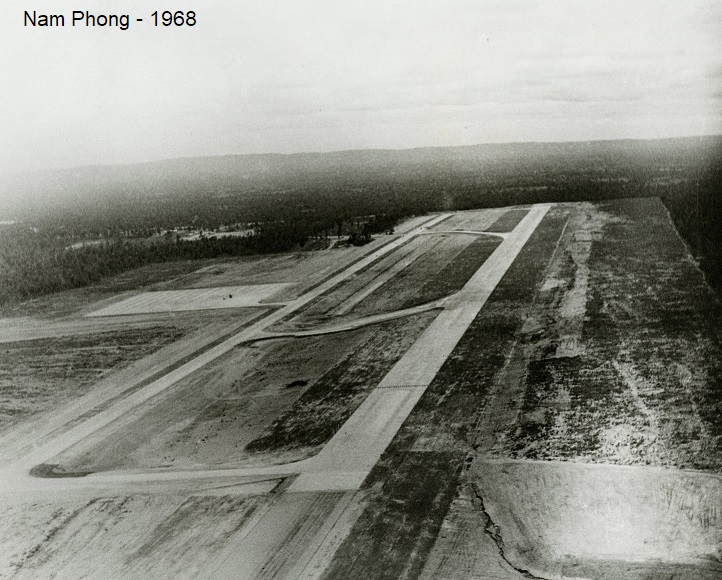
|
The team discovered there wasn’t
much there, just a 10’000 ft. runway, taxiway, and a handful of
buildings on an adjacent apron in the middle of the jungle being
used by the T-21’s and UH-1M's of the small contingent
of covert Thai and Laotian Forces.
Amidst much skepticism back at
the Pentagon that this field could be suitable, the Marines saw
things differently - noting Nam Phong was actually closer to Hanoi
than Da Nang they scoffed at the austere environment, and said
“we’ll take it”. |
Five days later, on 22 May, 1972, “Task Force
Delta” was born.
In spite of a general chaotic US military force
mobilization throughout the Pacific in response to the “Easter
Offensive”, the DoD pulled out all the stops they could for the
Marines, allocating Navy transport ships and the 5th NMCB
“SeaBees”, Army convoys from the port in Sattahip, MATCU-62
setting up local Air Traffic Control facilities for all the Air Force
C-141's and C-5s augmenting the Marines advance teams, Hotel and Lima
companies of 3rd Battalion/9th Marines
from Okinawa for base security, and VMGR-152's C-130s and
KC-130s transitioning in and out and providing in-air refueling, to
ready the base for expedition operations. This included expanding the
ramp area with steel-matting, bull-dozers for clearing jungle for
tents, setting up "6-holer" latrines, bringing in
generators, food and water supplies, laying barb-wire and digging
bunkers, all during the monsoon season.
As Task Force Delta's
outpost was going operational, VMFA-212 stood detached and retrograded
from Da Nang back to Kaneohe Bay on 18 June 1972.
| At Nam Phong, it was brutal, hot, bug-
and snake-filled non-stop days and nights, but 3 weeks
later back in the Pentagon a lot of bets were lost.
H&MS-36 detached four CH-46 helicopters on 11 June to
Nam Phong for SAR operations, and on 16 and 17 June
(respectively), VMFA-115 and VMFA-232 Phantoms took off from Da
Nang, conducted sorties over Viet Nam, landed at Nam Phong, set up
their tents alongside the tents already erected in the
red-brown mud and dirt and joined the
advance elements of MABS-15, H&MS-15 and the 7th
Counter Intelligence Team in their new jungle home. |
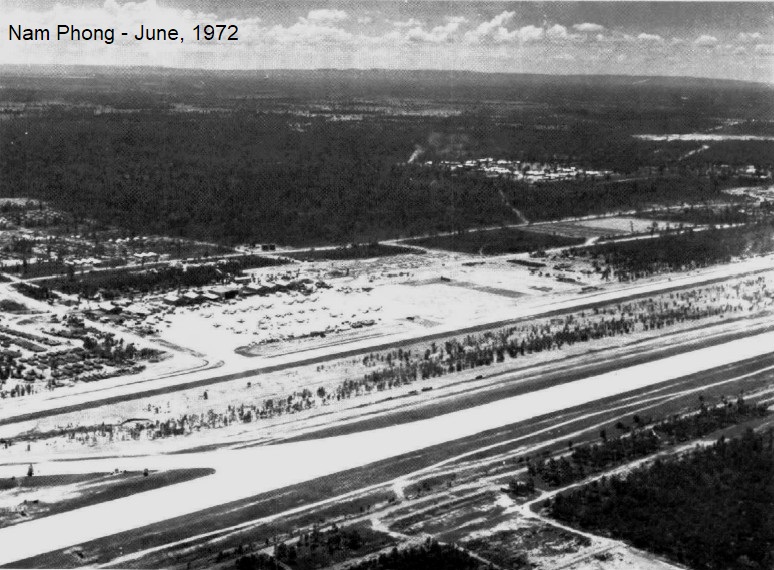
|
On 17 June the F-4 Phantoms of VMFA-115, having arrived
the day earlier, were refueled and rearmed and commenced combat
operations from the "Rose Garden" as VMFA-232 arrived. VMFA-232 commenced
combat operations on 20 June as the Task Force welcomed
VMA(AW)-533’s A-6a Intruders
from Mag-12 into their midst, the all-weather A-6a's commencing combat
operations immediately. Task Force Delta mobilization was complete
(although the base itself, incrementally improved as combat operations and
resources allowed, never would be).
Nobody knew at the time, but 15 months later, after virtually
continuous 24 /7 combat operations in Vietnam, Cambodia and
Laos, Task Force Delta would be the last Marine Combat force to stand
down and leave the Vietnam War theater.
And at the time, very few even
knew they were there at all.
(In fact, Marine Corps combat aircraft suddenly
appearing in airspace transversed by Thailand-based US Air Force
units
created some exciting encounters in mid-72, highlighting the need
to "spread the word" and share comm frequencies.)
